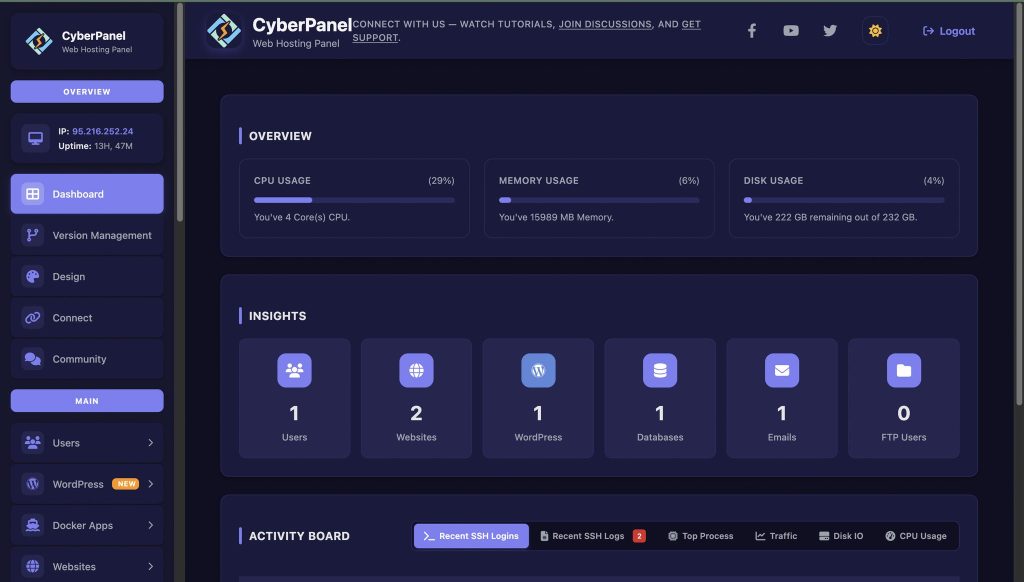In cases of performance tuning, troubleshooting, and compatibility checking, the system’s particulars become relevant while working in Linux. The Linux uname command stands out among the simplest and yet immensely powerful tools that allow a user to see essential system information in one line. Whoever you are, a newbie sipping a cup of coffee while experimenting with commands or a professional managing huge servers, knowing the uname command in Linux is truly a necessity.
The command can obtain the kernel version, system architecture, machine type, processor name, and operating system name without needing to take a look at configuration files. Heavy utilities are quite unnecessary for directly getting accurate information; anything that garners a little bit of weight could prove a hindrance to the performance level of the whole system operating on Linux, so uname Linux is second to none.
Let’s learn the Linux uname command together!
What is the uname Command in Linux?
Linux has a built-in command known as the uname command, which simply prints information pertaining to the system’s kernel and the hardware along with the operating system. The whole point is that this would save the time and effort of using other tools.
How to Use the uname Command in Linux?
This is done by typing uname followed by particular options in the terminal. Each option is indicative of some detail like a kernel name, version, or hardware type.
Syntax:
Get exclusive access to all things tech-savvy, and be the first to receive
the latest updates directly in your inbox.
uname [OPTION]
What are the Common uname Command Options?
Here are the most used uname command Linux options:
| Option | Description | Example | Output |
|---|---|---|---|
-s | Kernel name | uname -s | Linux |
-n | Node (hostname) | uname -n | server01 |
-r | Kernel release | uname -r | 6.8.0-35-generic |
-v | Kernel version | uname -v | #42 SMP Fri Aug 30 |
-m | Machine type | uname -m | x86_64 |
-p | Processor type | uname -p | x86_64 |
-o | Operating system | uname -o | GNU/Linux |
-a | All information | uname -a | Complete details |
Example of uname Command in Linux
To see all system details in one command, use:
uname -aOutput:
Linux server01 6.8.0-35-generic #42 SMP Fri Aug 30 14:35:45 UTC 2025 x86_64 GNU/Linux
Difference Between uname and Other Linux System Utilities
The Linux uname utility is faster and more valid in comparison to tools lsb_release or /proc/version. It is built-in, lightweight, and fetches its data from the kernel directly.
Role of CyberPanel with uname Command in Linux

The system specifics come into play when running websites or apps on CyberPanel, a web hosting control panel for Linux servers. Thus, using the Linux uname command can enable administrators to quickly check the kernel version and architecture before applying updates or configuring services so as to keep smooth hosting performance and avoid compatibility issues.
People Also Ask
Q1: What does the uname -a command do in Linux?
It displays all available system information including kernel name, version, release, machine type, processor, and operating system.
Q2: How do I find the Linux kernel version using uname?
Run uname -r to print the kernel release number.
Q3: Can uname show Linux distribution details?

No, uname shows kernel and system info. Use lsb_release -a for distribution details.
Q4: What’s the difference between uname -s and uname -o?
uname -s shows kernel name (Linux), while uname -o shows operating system (GNU/Linux).
Final Thoughts!
The uname command for Linux is a basic yet powerful command for checking essential system information. Once you master its options, it is simple to see the kernel version, architecture, processor type, and more. For server administrators, as an example, using CyberPanel, it is important to know the uname command option in Linux and speed up your system management and hosting stability.
Start using the uname command Linux provides today, and make your system checks quicker and more reliable!



